MONTENEGRO AND KOSOVO
My first visit to Montenegro took place many years ago when after visiting beautiful Dalmatia I continued on to Montenegro which is located immediately to the south. First you enter Castelnovo or Herceg Novi, a beautiful place with a small beach and the old village with the remains of the ancient castle. Afterwards you enter the Boka Kotor which is an indentation in the sea that looks like a lake and is all surrounded by very high mountains,
The main town is Kotor which is entirely surrounded by walls and has an ancient appearance with period buildings and beautiful churches.
Leaving the Bay of Kotor you arrive in Budva which has become perhaps the largest tourist center in the country and has grown a lot by climbing up the mountain while at the time of my visit it was a small town with walls and palm trees close to the sea and that's it.
Afterwards there is another town Petrovac, small and with an arched beach, then the delightful peninsula of Santo Stefano, once a fishing village then transformed into an exclusive tourist centre. It is connected to the mainland by a short isthmus of land surrounded by a beautiful sandy beach.
Then you come across Bar which is divided into two parts, the old and almost abandoned one in the mountains and the new one completely developed along the sea.
An important attraction is the royal summer palace of the Montenegrin monarchs whose daughter married the king of Italy.
Going further south you come across Ulcinj which is practically close to the border with Albania, inhabited mainly by Albanians.
It has a panoramic promontory that divides the beach from the port.
After Ulcinj the large beach or velika straza begins which goes on for many kilometers and continues into Albania.
Leaving Dubrovnik through the southern coast of Montenegro which I had already visited last year, changing buses in Herceg Novi for Bar where I stopped for the night before deciding which pass to arrive in Kosovo through.
Have already seen the delightful ruins of Stari Bar in the mountains, I go to discover the new Bar, the main port of the country. The city is modern, with tall buildings both dating back to the communist era and recent, with a central square that lines up three conical-shaped shopping centers and then the beautiful seaside promenade currently being rebuilt.
In the centre, the beautiful Palace of King Nicholas of Montenegro, surrounded by a beautiful park garden. On the ground floor there is a not very interesting archaeological museum and on the upper floors the original rooms with the period furniture of the Montenegrin monarch, with photos from the 1930s of the royal family which included Princess Elena, who married Vittorio Emanuele III and therefore became queen of Italy, the woman who raised the height of the Savoy, given that her husband, called Sabaletta, did not reach 1.60 meters in height.
The next day I take the bus that crosses the whole of Montenegro, avoiding the Albania until reaching Kosovo.
The landscape is interesting after crossing some tunnels and the short stop in the ugly capital of Podgorica, the old Titograd.
First you go along the enormous Skadarsko lake which is divided in half with Albania with the nearby city of Scutari or Skoder and then the Moraca river which has carved deep and spectacular gorges in the mountain. You pass through a few villages with beautiful houses and the Biogradska Gora National Park with mountain ski resorts and with lots of still recent snow, but clean roads, pine forests up to the pass that forms the border with Kosovo, an immense plain below.
As a traveling neighbor I have a nice Chinese girl who goes to visit some of her bag shops in Berane. We talk for hours about Italy, China, the Balkans. She has a small company with 7 employees, but she plans to return to her homeland soon, as she considers Montenegro a temporary opportunity, but a foreign and poor country, rather ignorant and not very clean even by Chinese standards. I would like to point out that at the time of my Chinese visit in 1983 the situation was very different and Montenegro was certainly more developed then than its enormous country.
After a brief passport check we go down and pass through PEIA or PEC which I stupidly skip to get to the much more distant PRIZREN, a city that is very reminiscent of Sarajevo even if it is circular and not longitudinal like the Bosnian city.
It is definitely the oldest and most interesting city in the country with the Kalaja fortress from the 11th century which dominates the enormous expanse from above that gathers around 200,000 people. The old city was recently restored after the war events which led to the destruction of several buildings, especially the important Orthodox churches, including the Church of the Holy Savior, cordoned off and still damaged and which you come across just along the hairpin bends that lead to the fortress. The latter is made up of high walls and some internal galleries, but there are no palaces or churches, just a spectacular view of the city below with the river which looks like a canal crossed by some bridges, one of which is ancient in stone but does not have the height and the spectacular nature of that of Mostar.
Next to the old Ottoman bridge, the rebuilt old city has a cobbled pavement, pedestrian streets and squares with many shops for tourists and bars, pubs and restaurants frequented especially in the evening by young locals .
There is a house that the owner demanded was rebuilt stone by stone as from the original building that the authorities had requisitioned on the other side of the river to build public buildings.
The Church of the Virgin of Levisa, a UNESCO heritage site, is completely cordoned off and under restoration, while some old mosques with their minarets are intact, in particular that of Sinan Pasha from 1561, near the old bridge.
Since it takes me a few hours to see the more interesting things, I decide to go back to Peia or Pec the next day, since it takes less than two hours and a 3 euro ticket to reach there by bus.
In fact it wasn't worth it, given that apart from the usual messy bazaar which sells mostly cheap Chinese items as well as the usual seeds, spices and local cheeses, there is the disappointing church of the Patriarchate of Pec, recently restored, but closed to the public, with a strange adjacent wall painted with the lion of St. Mark of Venice, perhaps because a local Catholic association paid for the restoration.
Peia was very important in the past precisely because it was the seat of this Patriarchate which enjoyed historical, religious and political importance.
For Orthodox Serbs even today, Kosovo, which declared itself independent only in 2008, is part integral part of the Serbian Republic and is considered a sacred and historical territory due to the presence of important monasteries and the territory of Kosovo Polje where the historic battle took place in 1389 which marked the conquest of the Serbian Kingdom by the Turks for over 5 centuries and which in any case is considered a heroic feat on the Serbian side even if they were defeated by the preponderant Turkish forces.
In the following centuries, Kosovo became increasingly Muslim and inhabited by Albanians who converted to Islam and during Tito's regime it was a province Autonomous which the Serbian dictator Slobodan Milosevic had canceled, incorporating the territory back into Serbia. After the disastrous wars of aggression against the other former Yugoslav Republics, the civil war with over 200,000 deaths, the massacres of Srebrenica, Gorazde and Vukovar, the siege of Sarajevo and Dubrovnik, the total destruction of Mostar, including the historic bridge, was the turn of the brutal occupation of Kosovo by the troops of General Mladic and the special units of the paramilitary Arkan who laid fire on Kosovo, forcing the inhabitants to abandon their villages destroyed.
Only the intervention of NATO and the bombing of Belgrade and Novi Sad managed to put an end to that disaster and even today Kosovo, despite the recent proclamation of independence, is presided over by NATO troops of KFOR who can be seen walking around with military soldiers and who essentially protect the few Serbs remaining in the country and the few Orthodox churches that have remained intact or the sacred ruins of those destroyed.
A month ago, Pacolli was elected President of the Republic of Kosovo, the ex-husband of our Anna Oxa, also of Albanian origin although born in Bari. It seems that the Americans did not like him due to his friendship with Putin (Pacolli restored the complex of buildings of the Moscow Kremlin a few years ago, making large profits and then becoming very rich with dubious activities) and then a new President was elected but it seems that the Kosovars are not satisfied with the replacement, convinced that the Americans have too much say in their country's choices.
The last visit is to the capital, PRISHTINA, a city that leaves you amazed by the presence of modern buildings and futuristic architecture such as the National Library, in the area of the university campus, designed in 1982 by the famous Croatian architect Mutnjakovic, but also of historic buildings such as the beautiful fifteenth-century mosque of Sultan Mehmet Fatih, also called Carshi.
Nearby you can visit the desolate National Museum, empty except for a famous statue as the 1,500 pieces were sent to Belgrade for protection and never returned and today the Museum only presents photos of some of these finds in addition to invitation to visitors to put pressure on Serbia for the restitution of the stolen goods.
Along the pedestrian boulevard Nena Tereze, the Albanian Mother Teresa of Calcutta, born in Skopje, now the capital of Macedonia, there are photos of many Kosovars disappeared during the Serbian aggression while inside the National Gallery there is an interesting photographic exhibition and some beautiful paintings by local artists from the last century.
At lunchtime I met hundreds of university students who were passing through between one lesson and another and I had the opportunity to chat with a couple of them. They told me that studying at university costs around 70 euros a month for accommodation and canteen and that local salaries are around 200 euros a month. Everyone complains as usual, but I haven't noticed any signs of poverty. The population is young, well dressed and numerous bars and fast food outlets are very popular. You usually eat a kebab sandwich with chips for around 1.50 euros and a good local beer costs 0.80 euros.
The hotels are quite expensive given the presence of the Americans from NATO who as usual have raised prices. I managed to find a good hotel in the center near the bazaar for a room with bathroom, TV and fridge for 35 euros with a rich breakfast included while near the bus station they had quoted me 85 euros and I was convinced that I would not find anything below that price.
Instead, I took a taxi for 2 euros that took me to the centre, the taxi driver pointed me to that excellent central hotel, much less expensive and more convenient for city visits.
I ended up doing a wild shopping spree of music CDs and DVDs of recent films in English with Albanian subtitles at the price of 1 euro each when in the next country, Macedonia, you could buy 6 of them for the same price!
I then bought a filigree silver set for my daughter and some perfumes of roses and other flowers, produced in Saudi Arabia and sold by a nice boy with a beard and a white Muslim dress, next to the old city mosque, as well as a carton of Lucky Strike cigarettes for his vicious daughter, taken Peia from a street vendor for just 10 euros.
Finally, what can we say about Kosovo? The most recent country, troubled, all under reconstruction, with a defective waste collection system that can be found on certain street corners, with cheering young people, but not very familiar with English, unlike the other Balkan countries, a pleasant green nature but not very interesting in terms of landscape, decent houses, good roads, very low cost of living apart from the hotels in Prishtina and above all returned to peace after the troubled years of the civil war. In short, a country that can be visited easily and comfortably , spending little even if it is not as interesting and beautiful as the next one, the beautiful Northern Macedonia L































Have already seen the delightful ruins of Stari Bar in the mountains, I go to discover the new Bar, the main port of the country. The city is modern, with tall buildings both dating back to the communist era and recent, with a central square that lines up three conical-shaped shopping centers and then the beautiful seaside promenade currently being rebuilt.
In the centre, the beautiful Palace of King Nicholas of Montenegro, surrounded by a beautiful park garden. On the ground floor there is a not very interesting archaeological museum and on the upper floors the original rooms with the period furniture of the Montenegrin monarch, with photos from the 1930s of the royal family which included Princess Elena, who married Vittorio Emanuele III and therefore became queen of Italy, the woman who raised the height of the Savoy, given that her husband, called Sabaletta, did not reach 1.60 meters in height.
The next day I take the bus that crosses the whole of Montenegro, avoiding the Albania until reaching Kosovo.
The landscape is interesting after crossing some tunnels and the short stop in the ugly capital of Podgorica, the old Titograd.
First you go along the enormous Skadarsko lake which is divided in half with Albania with the nearby city of Scutari or Skoder and then the Moraca river which has carved deep and spectacular gorges in the mountain. You pass through a few villages with beautiful houses and the Biogradska Gora National Park with mountain ski resorts and with lots of still recent snow, but clean roads, pine forests up to the pass that forms the border with Kosovo, an immense plain below.
As a traveling neighbor I have a nice Chinese girl who goes to visit some of her bag shops in Berane. We talk for hours about Italy, China, the Balkans. She has a small company with 7 employees, but she plans to return to her homeland soon, as she considers Montenegro a temporary opportunity, but a foreign and poor country, rather ignorant and not very clean even by Chinese standards. I would like to point out that at the time of my Chinese visit in 1983 the situation was very different and Montenegro was certainly more developed then than its enormous country.
After a brief passport check we go down and pass through PEIA or PEC which I stupidly skip to get to the much more distant PRIZREN, a city that is very reminiscent of Sarajevo even if it is circular and not longitudinal like the Bosnian city.
It is definitely the oldest and most interesting city in the country with the Kalaja fortress from the 11th century which dominates the enormous expanse from above that gathers around 200,000 people. The old city was recently restored after the war events which led to the destruction of several buildings, especially the important Orthodox churches, including the Church of the Holy Savior, cordoned off and still damaged and which you come across just along the hairpin bends that lead to the fortress. The latter is made up of high walls and some internal galleries, but there are no palaces or churches, just a spectacular view of the city below with the river which looks like a canal crossed by some bridges, one of which is ancient in stone but does not have the height and the spectacular nature of that of Mostar.
Next to the old Ottoman bridge, the rebuilt old city has a cobbled pavement, pedestrian streets and squares with many shops for tourists and bars, pubs and restaurants frequented especially in the evening by young locals .
There is a house that the owner demanded was rebuilt stone by stone as from the original building that the authorities had requisitioned on the other side of the river to build public buildings.
The Church of the Virgin of Levisa, a UNESCO heritage site, is completely cordoned off and under restoration, while some old mosques with their minarets are intact, in particular that of Sinan Pasha from 1561, near the old bridge.
Since it takes me a few hours to see the more interesting things, I decide to go back to Peia or Pec the next day, since it takes less than two hours and a 3 euro ticket to reach there by bus.
In fact it wasn't worth it, given that apart from the usual messy bazaar which sells mostly cheap Chinese items as well as the usual seeds, spices and local cheeses, there is the disappointing church of the Patriarchate of Pec, recently restored, but closed to the public, with a strange adjacent wall painted with the lion of St. Mark of Venice, perhaps because a local Catholic association paid for the restoration.
Peia was very important in the past precisely because it was the seat of this Patriarchate which enjoyed historical, religious and political importance.
For Orthodox Serbs even today, Kosovo, which declared itself independent only in 2008, is part integral part of the Serbian Republic and is considered a sacred and historical territory due to the presence of important monasteries and the territory of Kosovo Polje where the historic battle took place in 1389 which marked the conquest of the Serbian Kingdom by the Turks for over 5 centuries and which in any case is considered a heroic feat on the Serbian side even if they were defeated by the preponderant Turkish forces.
In the following centuries, Kosovo became increasingly Muslim and inhabited by Albanians who converted to Islam and during Tito's regime it was a province Autonomous which the Serbian dictator Slobodan Milosevic had canceled, incorporating the territory back into Serbia. After the disastrous wars of aggression against the other former Yugoslav Republics, the civil war with over 200,000 deaths, the massacres of Srebrenica, Gorazde and Vukovar, the siege of Sarajevo and Dubrovnik, the total destruction of Mostar, including the historic bridge, was the turn of the brutal occupation of Kosovo by the troops of General Mladic and the special units of the paramilitary Arkan who laid fire on Kosovo, forcing the inhabitants to abandon their villages destroyed.
Only the intervention of NATO and the bombing of Belgrade and Novi Sad managed to put an end to that disaster and even today Kosovo, despite the recent proclamation of independence, is presided over by NATO troops of KFOR who can be seen walking around with military soldiers and who essentially protect the few Serbs remaining in the country and the few Orthodox churches that have remained intact or the sacred ruins of those destroyed.
A month ago, Pacolli was elected President of the Republic of Kosovo, the ex-husband of our Anna Oxa, also of Albanian origin although born in Bari. It seems that the Americans did not like him due to his friendship with Putin (Pacolli restored the complex of buildings of the Moscow Kremlin a few years ago, making large profits and then becoming very rich with dubious activities) and then a new President was elected but it seems that the Kosovars are not satisfied with the replacement, convinced that the Americans have too much say in their country's choices.
The last visit is to the capital, PRISHTINA, a city that leaves you amazed by the presence of modern buildings and futuristic architecture such as the National Library, in the area of the university campus, designed in 1982 by the famous Croatian architect Mutnjakovic, but also of historic buildings such as the beautiful fifteenth-century mosque of Sultan Mehmet Fatih, also called Carshi.
Nearby you can visit the desolate National Museum, empty except for a famous statue as the 1,500 pieces were sent to Belgrade for protection and never returned and today the Museum only presents photos of some of these finds in addition to invitation to visitors to put pressure on Serbia for the restitution of the stolen goods.
Along the pedestrian boulevard Nena Tereze, the Albanian Mother Teresa of Calcutta, born in Skopje, now the capital of Macedonia, there are photos of many Kosovars disappeared during the Serbian aggression while inside the National Gallery there is an interesting photographic exhibition and some beautiful paintings by local artists from the last century.
At lunchtime I met hundreds of university students who were passing through between one lesson and another and I had the opportunity to chat with a couple of them. They told me that studying at university costs around 70 euros a month for accommodation and canteen and that local salaries are around 200 euros a month. Everyone complains as usual, but I haven't noticed any signs of poverty. The population is young, well dressed and numerous bars and fast food outlets are very popular. You usually eat a kebab sandwich with chips for around 1.50 euros and a good local beer costs 0.80 euros.
The hotels are quite expensive given the presence of the Americans from NATO who as usual have raised prices. I managed to find a good hotel in the center near the bazaar for a room with bathroom, TV and fridge for 35 euros with a rich breakfast included while near the bus station they had quoted me 85 euros and I was convinced that I would not find anything below that price.
Instead, I took a taxi for 2 euros that took me to the centre, the taxi driver pointed me to that excellent central hotel, much less expensive and more convenient for city visits.
I ended up doing a wild shopping spree of music CDs and DVDs of recent films in English with Albanian subtitles at the price of 1 euro each when in the next country, Macedonia, you could buy 6 of them for the same price!
I then bought a filigree silver set for my daughter and some perfumes of roses and other flowers, produced in Saudi Arabia and sold by a nice boy with a beard and a white Muslim dress, next to the old city mosque, as well as a carton of Lucky Strike cigarettes for his vicious daughter, taken Peia from a street vendor for just 10 euros.
Finally, what can we say about Kosovo? The most recent country, troubled, all under reconstruction, with a defective waste collection system that can be found on certain street corners, with cheering young people, but not very familiar with English, unlike the other Balkan countries, a pleasant green nature but not very interesting in terms of landscape, decent houses, good roads, very low cost of living apart from the hotels in Prishtina and above all returned to peace after the troubled years of the civil war. In short, a country that can be visited easily and comfortably , spending little even if it is not as interesting and beautiful as the next one, the beautiful Northern Macedonia L


















































































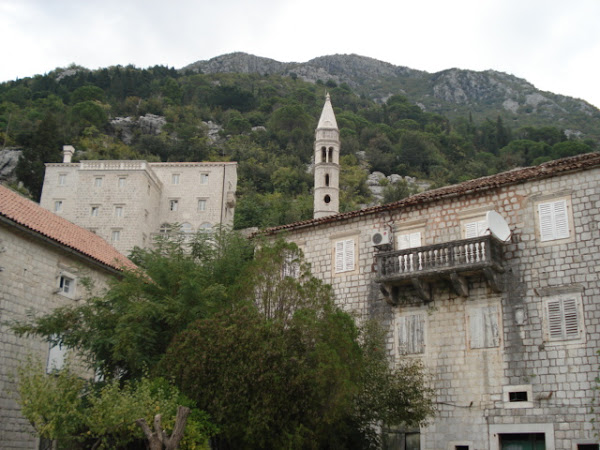




















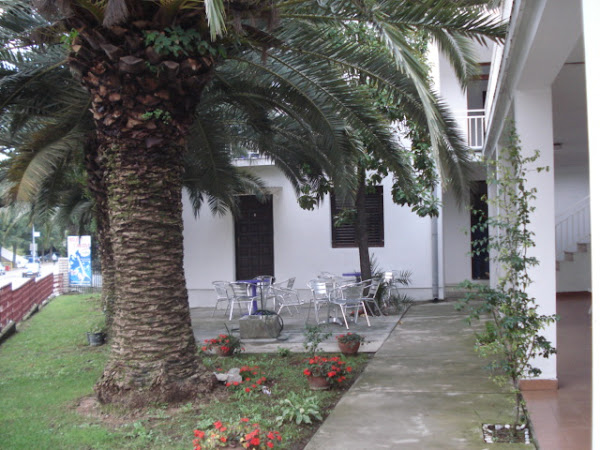



























































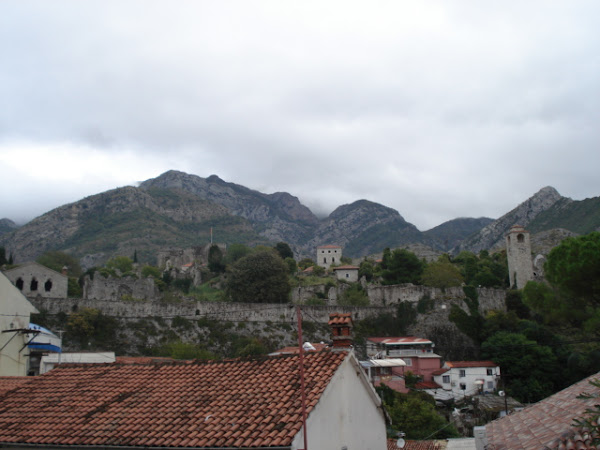



































































































































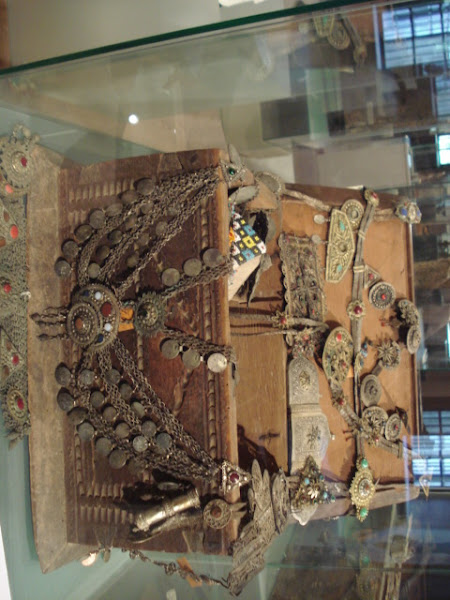



























































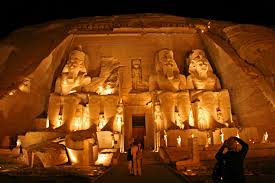
Comments
Post a Comment